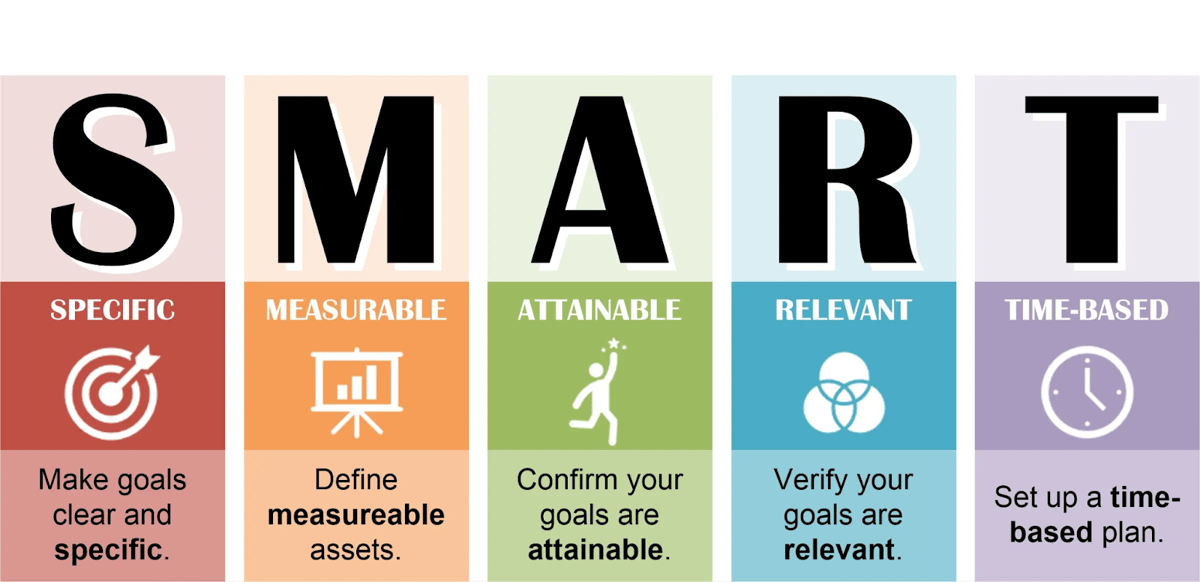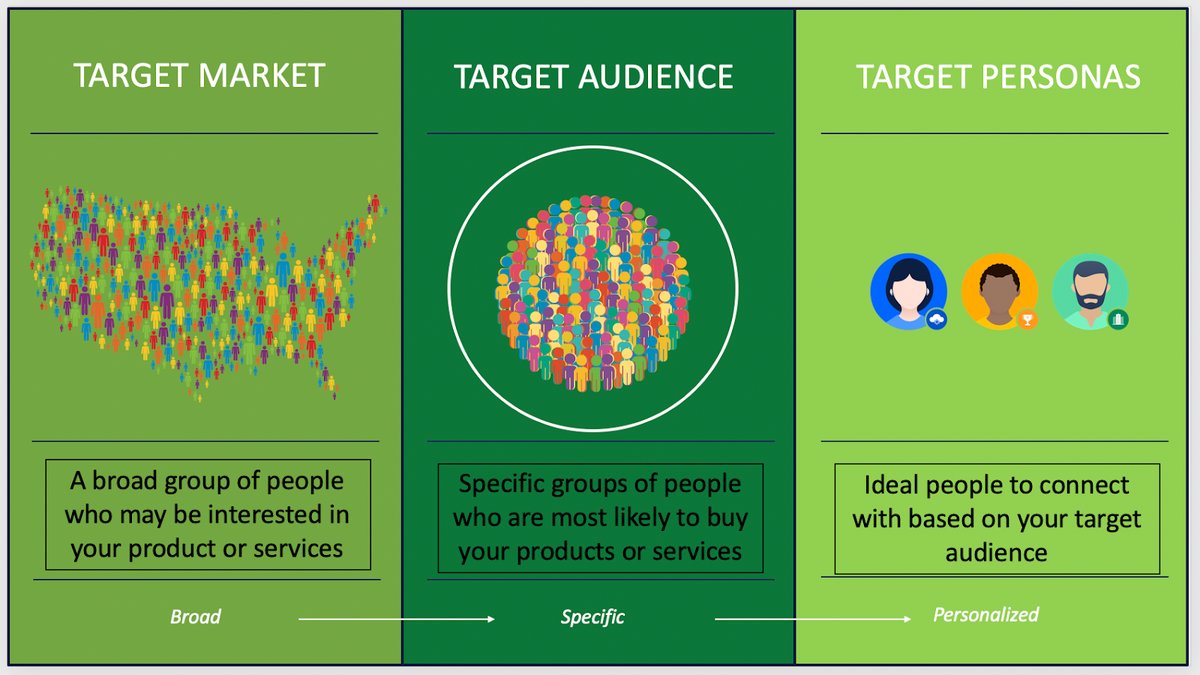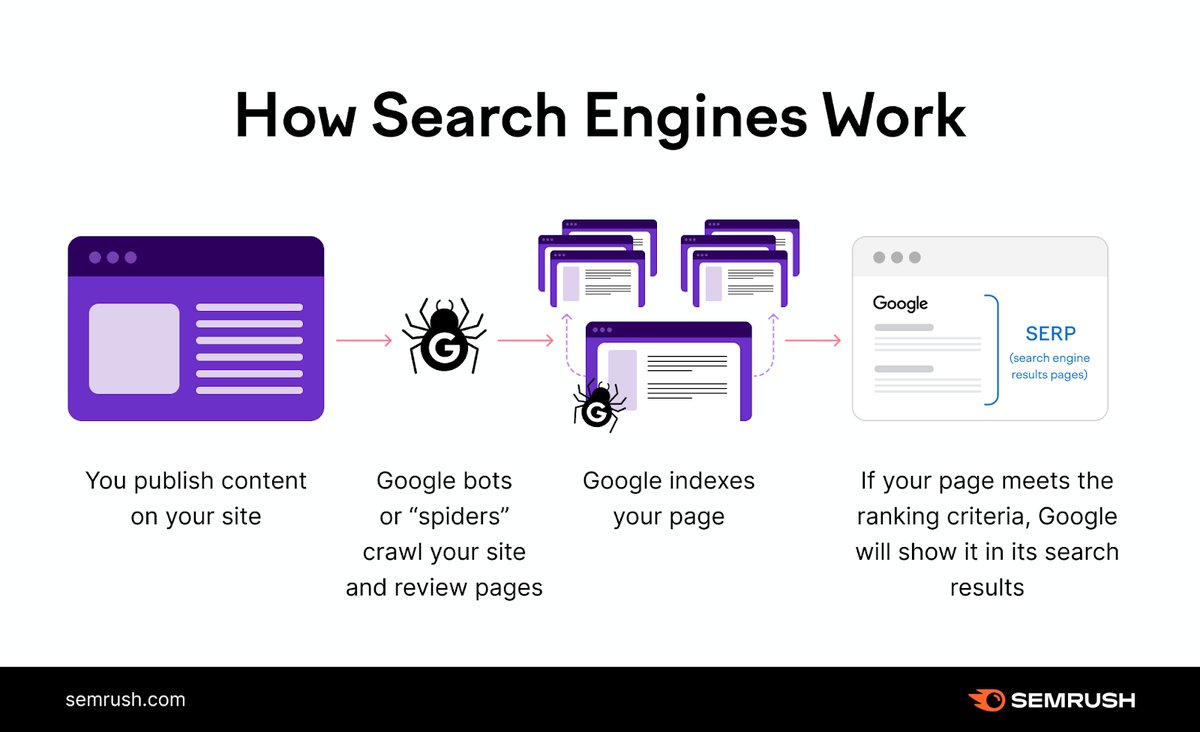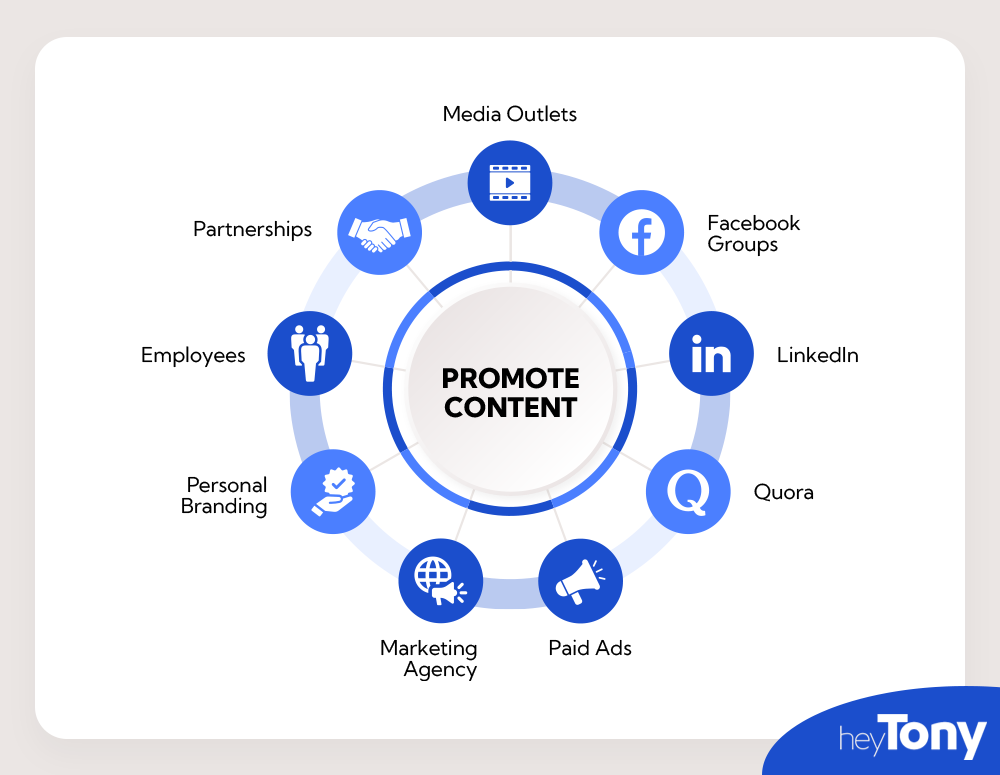Everyone knows that any business looking to establish its brand, connect with its audience, and increase conversions needs an effective content marketing plan. Content marketing is about creating and sharing valuable, relevant, consistent content. What does it have to do with your profit? With a proper content marketing plan, you can attract and engage a clearly defined audience, which will drive more profit. With that said, developing a content marketing plan is necessary for any business wanting to grow and raise brand awareness, and it should work hand in hand with a solid business plan template that outlines your overall strategy.
We can get right into the ten steps you can take to develop a successful content marketing plan.
First off, you have to know what you want from the content marketing plan. More reach? Backlinks? Increased conversions? Sharing your expertise? Whatever the goals you have, they should align with your overall business objectives and be SMART (Specific, Measurable, Achievable, Relevant, Time-bound):
1. Specific
Don’t say something general like, "I want to increase website traffic." Well, who doesn’t, right? Be specific. Instead, say, "I want to boost website traffic by at least 15% in the next six months". See the difference? It is important to be specific about your goals because you will see a way to achieve them when you see them.
2. Measurable
You got specific goals, but without being able to track them there is no use in them. How can you even know what you achieved and when? That’s why be specific not only about your goals but also about the numbers so you can track your progress. Instead of saying something vague like "I want more leads!", say, "I want 120 new leads each month for the next year."
When you have measurable and specific goals, you're not just wishing for success; you're building a path to achieve it. This gives you something concrete to strive for and a way to track your success along the way.
3. Achievable
Of course, dreaming big is essential to having a vision for your business in the future. But when developing a content marketing plan, think about what’s realistically doable. For example, if you're only starting to create content, aim to increase your website traffic by 10% in the next three months rather than hoping for a 100% increase in a week.
Aiming too high too soon can lead to frustration and burnout. But if you do the opposite and set achievable goals, you have a higher chance of getting them. Plus, doesn’t it feel awesome and keep you motivated when you hit one of the milestones?
4. Relevant
Next, make sure your goals are relevant. This means they should match your overall business goals and content marketing strategy. For example, if your main business objective is to increase revenue, then your content marketing goal should directly support this.
For example, if you want to establish thought leadership, a relevant content marketing goal might be to "publish two authoritative blog posts per month that get at least 1,000 views each." It’s about making sure you’re not just producing some content but producing content that serves a particular purpose.
5. Time-bound
Time-bound goals mean setting a clear timeline for achieving them. Instead of just saying, "I want to increase blog traffic," put a deadline on it, like "I want to increase blog traffic by 25% by the 20th of July."
Deadlines create a sense of urgency and help keep you on track. With a specific timeframe, you’re more likely to stay focused and motivated to achieve your objectives.

Image source: FCS
The second step is to define your target audience, which is key to creating relevant content that will engage your readers. Here are some of the steps you can take to get it right:
1. Create Buyer Personas
Who is your ideal customer? What’s their age, gender, location, occupation, interests, etc.? The bottom line is that you have to develop customers' profiles. To do that, you can use information from market research and the data about your existing customers.

Image source : Search Engine Journal
2. Conduct Audience Research
Use surveys, interviews, and analytics tools to gather insights about your audience. Analyze your website and social media analytics to understand your audience's behavior and see what they are into. This step will also help you create your buyer persona profile, so you must do this diligently.
3. Identify Audience Needs and Pain Points
Your content has to be relatable. By relatable, I mean something your audience will use to solve their problems. Find out what problems your audience is trying to solve and what content they find helpful for their needs.A computerized maintenance management system (CMMS) can aid in systematically tracking and managing these needs and pain points. This way, you will know better what kind of content strategy you need and how to address your customers' specific challenges and interests.
When pitching a product, addressing these pain points directly can significantly increase your chances of success.Understanding your audience ensures that your content resonates with them, meets their needs, and encourages them to take action.
If you have already created some content, try to assess it. A content audit will allow you to review the existing content and determine what is working and what needs to be improved.
1. Evaluate Existing Content
Try looking for some patterns and trends. What content has been the most successful regarding engagement, traffic, and conversions? Analyze the performance of each piece of content, and you find the gaps that need to be fixed.
2. Identify Content Gaps
This could be missing topics, outdated information, or content that doesn’t match your audience’s needs. Whichever piece of content wasn’t successful will give an idea of what has to be improved.
3. Repurpose High-Performing Content
Now, if you have found content that has performed highly great, try finding ways to repurpose it. You can turn a popular blog post into an infographic, video, or social media series. Here is the trick: you can use well-performing content to improve it.
Conducting a content audit helps you make better decisions about future content creation—this way, you know that your content will bring value to your audience.
Your content strategy should include the types of content you will create, the themes and topics you will cover, and the channels you will use to distribute your content.
1. Content Types
Decide on the types of content you will create. It can be blog posts, videos, infographics, ebooks, podcasts, and social media posts. If you aren’t sure what types of content to use, then go back to step 2 and conduct an audience research to figure our what your audience prefers and what formats will work best.
2. Content Themes and Topics
Identify key themes and topics that match your audience’s interests and business goals. You can even create a list of topics to cover in your content. This will help you have a more structured way to ensure consistency and relevance.
3. Content Distribution Channels
Find out where you will share your content. Do your readers prefer your website, blog, social media platforms, or email newsletters? Choose channels that will effectively reach your target audience.
For a better and more organized workflow, use a content calendar. With its help, you can easily:
1. Plan Content Creation and Publication
Schedule when and where your content will be published. Plan to have different types of posts but also make sure to post regularly. Use social media scheduling tools to create and schedule all posts in advance.
2. Set Deadlines and Assign Responsibilities
Assign tasks to team members and set deadlines for each stage of the content creation process, from ideation to publication.
3. Include Key Dates and Events
Add important dates and events relevant to your industry. You must know everything about holidays, product launches, or industry conferences to create timely and relevant content.
The market is very competitive, so to establish your brand as an authority in your industry, you must create high-quality content that your audience will want to read regularly.
1. Writing and Editing Best Practices
It goes without saying that your content needs to be well-written, clear, and error-free. Utilize tools like an AI content app to maintain a consistent tone and style that aligns with your brand voice.
2. Use of Visuals and Multimedia
Who likes to read long texts without fun or informative images, infographics, videos, and other multimedia elements? Not only do they make your content more engaging, but also visually appealing. You can also use design templates to maintain consistent styles across your visuals, ensuring your content looks polished and professional.
3. SEO Optimization
No matter how good your content is, you need to optimize for search engines to get the reach and visibility you deserve. Use high-performing keywords, write intriguing meta descriptions, and, leverage AI SEO Tools and don’t forget your content has to be well-structured with proper headings and subheadings.

Image source: Semrush
If you have already created good content, you are only halfway there. Because now you have to make sure your audience sees it. It doesn’t matter how good your content is if it never reaches your target audience. So here is what you can do to promote it:
1. Social Media Marketing
Share your content on social media platforms like LinkedIn, Instagram, Facebook, and different forums to reach a wider audience. However, keep in mind that you must adjust your content a bit to each platform and use engaging visuals and CTAs.
2. Email Marketing
Use email newsletters to share your content with your subscribers. However, you can also consider cold email outreach to find more people interested in your content.
3. Backlinks exchange
One of the effective ways to make sure a larger group sees your content of people is to do a backlinks exchange. Not only will it improve your SEO but it will also drive more traffic to your content. Reach out to websites and blogs related to your industry and propose mutual backlinks exchange. However, you can hire a link-building agency like GrowthMate that helps B2B brands outrank competitors in SEO and generate more revenue with backlinks.
There are also a few tools that can make your work easier, such as the spam-free platform called Ranking Raccoon. Ranking Raccoon is a manually moderated community where only verified, quality sites are allowed, which means a safer and more enjoyable link building process.
4. Collaborations and Partnerships
With so many influencers and industry experts you can partner with, more opportunities exist to reach your readers. Collaborating with them might be a great idea as you can exchange guest posts, create co-created content, and conduct joint promotions.For effective management of influencer partnerships and campaigns, consider leveraging the influencer marketing software to streamline collaboration and maximize ROI.

Image source: HeyTony
You want your audience to feel like they belong and are part of a community. Engaging with them by making them interact with your content is key to building a loyal community that will look forward to each new piece of content you create.
1. Encourage Comments and Feedback
Ensure you create a space where your readers feel safe and encouraged to share their thoughts and opinions on your content. You can do that by asking questions in your articles and encouraging discussions.
2. Respond to Audience Interactions
If your readers comment or message you, remember to respond ASAP. You have to show how thankful you are for their input. That’s how they will feel encouraged to interact with your content even more.
3. Foster a Community
Create opportunities for your audience to connect with each other and with your brand. This can include social media groups, online forums, and community events.
When all the steps above are taken, what’s left is to track the performance. You need to see what works and what doesn’t and real numbers’d better support it.
1. Key Metrics and KPIs
You can use the metrics that are most important to you, but the most common metrics include website traffic, engagement (likes, shares, comments), lead generation, conversion rates, and customer retention.
2. Tools for Analytics
Use analytics tools like Google Analytics, social media analytics, and email marketing platforms to gather data on your content’s performance.
3. Interpreting Data and Making Adjustments
When you have the data, analyze it and find trends, strengths, and things you can improve. With these insights, you can make the right adjustments to your content strategy for better results.
Of course, the content marketing process never ends, as you will always have to find something to improve and optimize.
1. Continuous Improvement
Check your content marketing plan regularly. Based on how well it is working and what your audience says, make changes.
2. Incorporate Feedback and Lessons Learned
Your audience is the answer to all your questions. Their feedback can help you adjust your strategy. Your only job is to take it into account.
3. Stay Updated with Industry Trends
The world of content marketing is developing faster than ever with new AI features. Keep up with the latest trends and best practices in content marketing to ensure your strategy is still relevant and effective. To do so, go to industry conferences, read industry blogs, and connect with other content marketers.
To wrap things up, a solid content marketing plan is key for any business looking to boost its brand and hit its goals. Knowing your audience, setting clear targets, and consistently creating great content are all super important. However, keep an eye on how your content is performing and stay up-to-date with the latest trends to ensure your strategy stays on point and effective.
Find out if MentorCruise is a good fit for you – fast, free, and no pressure.
Tell us about your goals
See how mentorship compares to other options
Preview your first month
